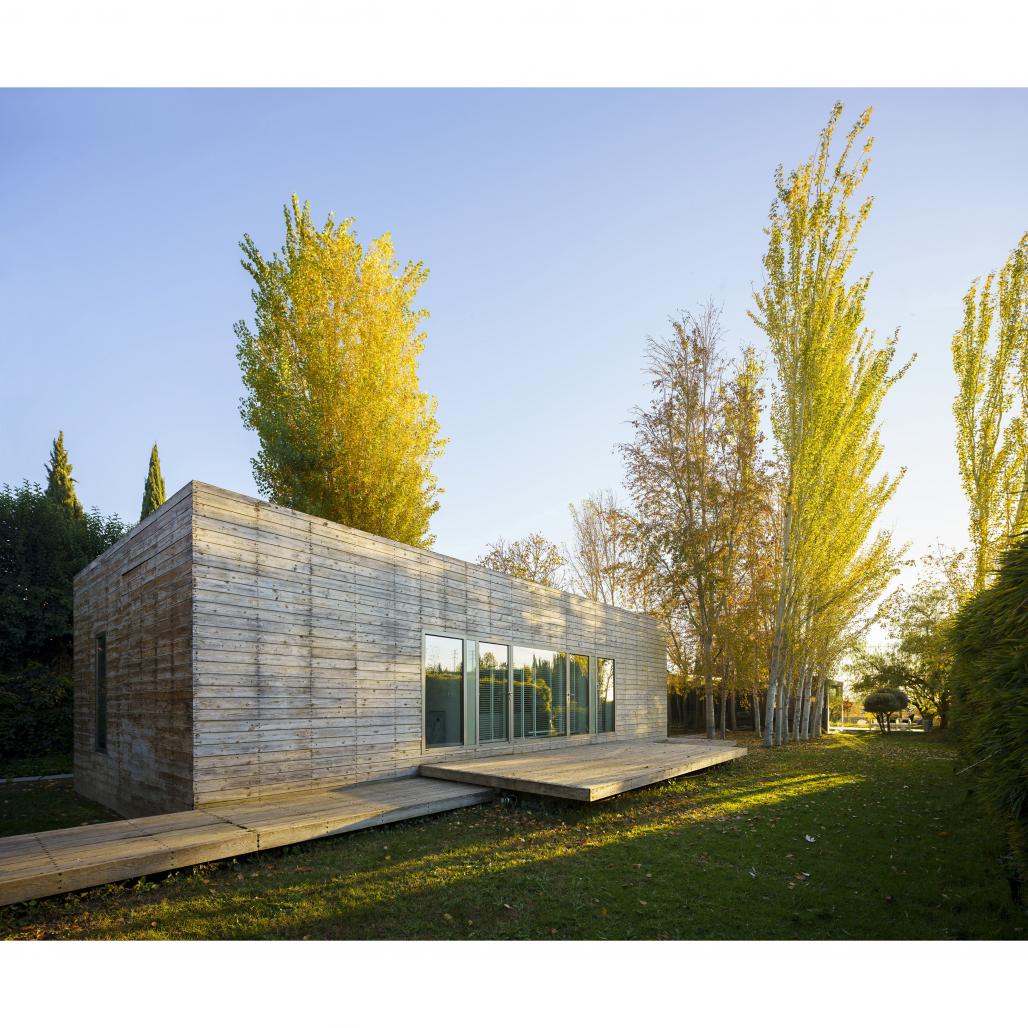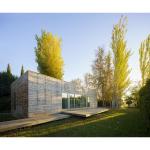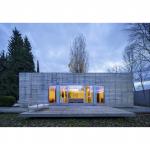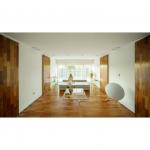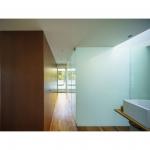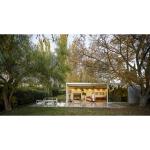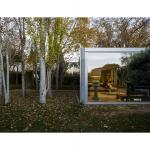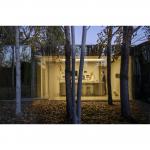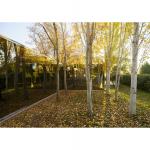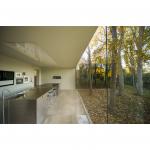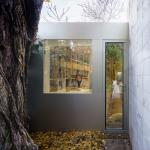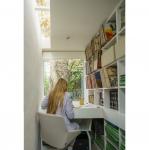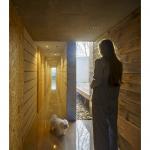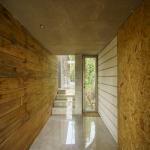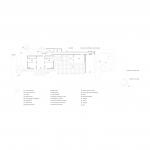Project description
"The challenge of architecture today is to understand the rural world" Rem Koolhaas
The project supports the renovation of a dwelling in nature consisting of three pavilions and the creation of a new pavilion as a "connected office". The main objective is to convert it into a house that meets the housing needs that the recent pandemic has shown to be lacking, to adapt it to its current living situation, to improve energy efficiency... and to enrich the quality of life of the owners.
The origin of the house was the transformation of an old shed. The functional needs forced successive extensions and the resource exhibited gravitated to leave the wooden building free-standing, for its uniqueness. New buildings were proposed, not competing with the original, creating changing passages, folded to nature, connected by the thickened party wall. Each pavilion erects different architectures.
"Nature becomes landscape when man frames it" Le Corbusier.
Architecture of simple lines that respects nature, with a marked horizontality and borrowing the landscape. Configured by four scattered pavilions that are looking for the relationship with nature. They are wrapped and protected by the existing trees on the farm "disparate natural landscapes", looks into the depths of the Vega, is committed to the landscape.
It is located on a plot of 1000m2, in Granada. The visual limit is established by the white peaks of the Sierra Nevada. Vega: horizontal landscape of great extension, fragmented by poplar crops and isolated buildings. The landscape changes with time, the passing of the seasons, the variations of the climate, the difference in crops.
The house embraces the existing trees, because of their age they are sculptures in the landscape. The layout folds to them, protects the buildings, makes them sustainable using nature as a base technology. Courtyards are founded in each pavilion, the exterior is medicine for the users.
The dividing wall widens (80cm) on the inside to house the gallery that leads to the pavilions. The pavilions appear in the house by fascination, associated with disparate landscapes. The gallery is the threshold, the place where memories are erased and allows access to new ones. Experiences and perceptions that establish in the architectural space an emotional influence.
Four buildings; wooden, (bedrooms), time has acted and its color is that of the trees, glass (living room), open is the porch of the garden, a large walnut tree shelters it, reflective, immersed in a poplar grove, perceives its magnitude enlarged (kitchen), sheltered (office), allows work at home, on line, requested by the pandemic.
The dividing wall in its interior is a gallery in semi-darkness. The bowels of a brick wall, which is inhabited to connect, creating a threshold to surprise with the heteroclite landscape of each pavilion.
It erects variables the relationship between the buildings and the nature. It is sheltered on floating platforms (bedrooms), the limit disappears (living), submerged in the forest (kitchen), or protected under a century-old elm (office).
It sets up a place where every day is exciting to live and quiet to think.
2019
2021
Credits
Project's name: LOÉ EMOTIONAL. HOUSING IN NATURE
CITY OF GRANADA. SPAIN
Architectes EDUARDO MARTÍN MARTÍN
OLYMPIA MARTÍN GÓMEZ
E-mail: [email protected]
Architecture Office Country: SPAIN
Construction completion year: 2021
Builded surface: 214,87 m2 of housing
76,41 m2 of porches
Plot area: 997,49 m2
Budget: 163.313 €
Location: C/ Virgen Blanca 15. 18004 Granada
Photographs: Javier Callejas
ORIGINAL PAVILION. -BEDROOMS. BREAK-
The building was founded on the site of an old wooden shed, transforming it into a small house. It consisted of a living room, two bedrooms, a kitchen and a bathroom made up of three compartments. The recent transformation accommodates a space for relaxation and reading, two bedrooms and two similar bathrooms with the three cabins, one of them (the dressing table), open.
1ª EXTENSION. DAY PAVILION. -UNDER THE WALNUT TREE-
The birth of a new daughter in the family made it advisable to expand the house, so a pavilion was designed at 20 m. of the existing one and not modify the proportions of the original pavilion, looking for another landscape, under a walnut tree. The day pavilion (living room-kitchen) was located with a small toilet and in the wooden one the children's study room, three bedrooms and the bathroom were located. They connected through the dividing wall that was thickened: the shade of the two landscapes.
2ª EXTENSION. REFLECTIVE PAVILION IN LA CHOPERA
The owners decided to separate the kitchen from the living room so a third pavilion was created for it next to the usual dining room of the house. Introduced in the poplar, so as not to visually diminish its scale. I know design this pavilion in a way that reflected "the forest", thus doubling the perception.
3ª EXTENSION. WORK PAVILION. UNDER THE CENTENARY CHOPO
The recent modification consisted of adapting the home to the pandemic, with the creation of a connected office, and the gestation of a way of life linked to nature and personal growth. The new functional adaptation of the wooden pavilion with two bedrooms and their bathrooms, next to the rest and reading room. Finally, improve the conditioning of the whole house with a sustainable system.
